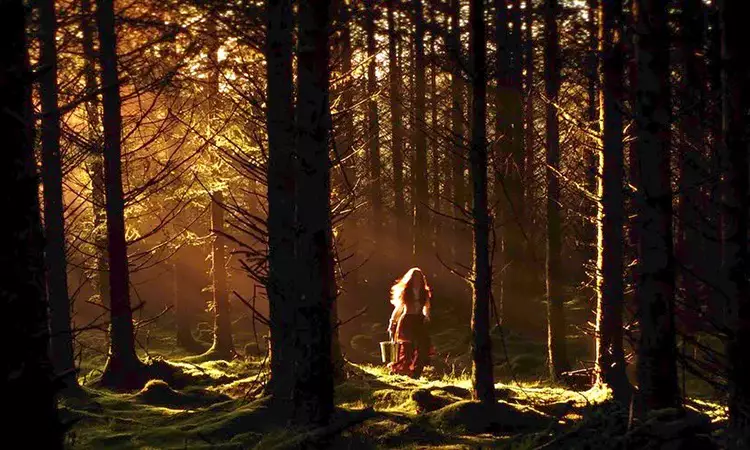An Taibhse, or The Ghost, directed and written by John Farrelly, is a film that intricately intertwines elements of psychological horror and coming-of-age narrative, set in the eerie confines of an old mansion during a frigid winter. Farrelly takes a bold approach by crafting a story predominantly in Irish, adding an authentic layer that is rarely seen in the horror genre. The film opens with a chilling exchange between a father and his daughter, Máire Finegan, which immediately places the audience in a world of emotional turbulence and looming dread.
From the very first scene, the specter of “Alexander” introduces ambiguity that permeates the narrative. Is Alexander a ghostly entity or merely a projection of Máire’s vivid imagination, fueled by the trauma of losing her mother? This spectral question echoes throughout the film, calling into question the reliability of both the characters’ perceptions and the audience’s interpretations. The insistence of the father, Éamon, that “Alexander is not real” does little to dispel the sense of foreboding that surrounds them. This psychological layer elevates the horror from simple jump scares to deeper existential concerns, making viewers ponder the very nature of reality as experienced by a grieving child.
This narrative tension resembles the psychological horror found in Stanley Kubrick’s The Shining, drawing parallels between the torment of its characters and the sinister atmosphere of the mansion they inhabit. The Finegans, serving as caretakers of a vast estate, echo the Torrances’ isolated existence. As the story unfolds, Éamon’s descent into alcoholism and violence echoes a similar trajectory as Jack Torrance’s spiraling madness. Máire’s intuition that danger lurks in the shadows transforms her home into both a sanctuary and a prison, manifesting her father’s unraveling psyche as a threat almost as haunting as any specter. This duality of danger illustrates the film’s core conflict: that the real horrors often lie within familial relationships, rather than the supernatural.
An Taibhse situates itself firmly within the gothic tradition, using setting as a character that amplifies the narrative’s tension and thematic elements. The too-large mansion, with its twisting corridors and unsettling silence, acts as a catalyst for Máire’s burgeoning fears. Farrelly’s choice to depict the ghostly aspects of the home through suggestive lighting and haunting visuals rather than over-the-top special effects allows the viewer’s imagination to fill in the gaps, creating a much more intimate and unsettling horror experience. The shadows seem to hold secrets of their own, further isolating Máire as she grapples with her father’s deteriorating mental state and the rising tides of her own fears.
Beyond the supernatural elements lies a deeply personal and troubling coming-of-age story. As Máire encounters both her first blood and the metaphorical bloodshed represented in her visions, Farrelly lays bare the complexities of her transition into womanhood. The repeated presence of a crimson book filled with ‘forbidden knowledge’ parallels her unnerving journey as she learns more about her father’s flaws and the realities of adulthood. This book becomes a symbol of both awakening and danger, emphasizing the fine line between the innocence of childhood and the harsh truths of maturity.
As the film draws to a close, a series of rapid, jarring montages serves to highlight the chaotic nature of Máire’s experiences. The chaotic imagery encapsulates the contradictions of her journey — a delicate interplay of fear, longing, and the desperate need for escapism. Máire’s wistful acknowledgment that she wishes Alexander were real reflects her struggle between the comforts of fantasy and the harshness of her lived experience, underscoring her psychological fragility.
The film’s conclusion is not just a horror reveal but a poignant commentary on familial relationships shrouded in trauma. Farrelly’s characters, particularly the haunting figure of the father, merge the lines between fear and longing, painting a portrait of a male figure who is as capable of love as he is of destruction. It poses the question of whether the real ghosts in Máire’s life are the repressed traumas and the chaotic emotions stemming from her father’s actions.
In the end, An Taibhse emerges not merely as a ghost story but rather as an exploration of the fragmented psyche of a young girl caught in the throes of maturation, haunted by both imagined specters and the chilling reality of her circumstances. The film offers viewers a complex, multifaceted narrative that lingers in one’s mind, challenging perceptions of horror, trauma, and the inevitable unraveling that accompanies growing up.

